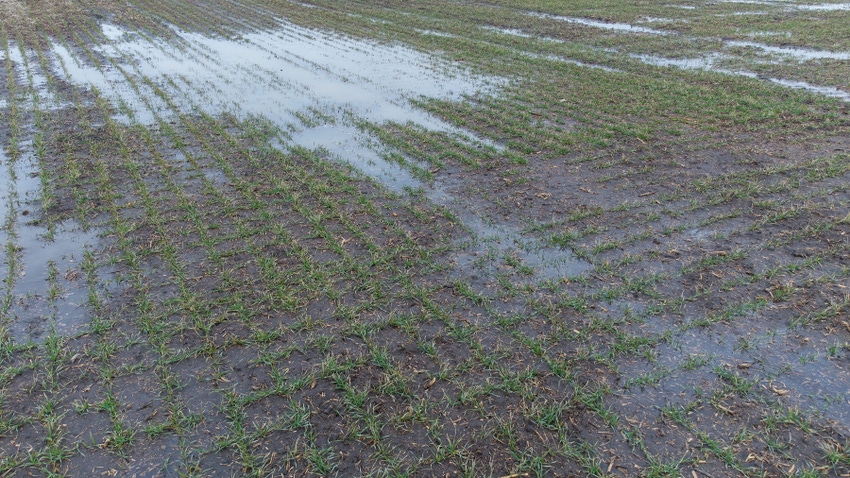April 14, 2023

Winter wheat is one of the major winter crops grown in South Dakota, with winter rye and triticale making minor contributions. According to the USDA National Agricultural Statistics Service, about 830,000 acres were seeded to winter wheat last fall.
Due to extreme drought, many producers who had plans to grow winter wheat were forced to change their mind in 2022. After the extremely dry year, precipitation has been much higher than average this year, which will help replenish soil moisture levels for the upcoming season.
In normal circumstances, wheat seedlings after gradual acclimation to cooler fall temperatures go into dormancy and remain dormant through winter. Once temperatures rise in spring, wheat plants regrow, or “green up.”
During the overwintering process, snow plays an important role in providing not only insulation to regulate the extreme fluctuations of air temperatures, but also soil moisture as it melts. However, instant melting due to a sudden rise in temperatures may create waterlogged or flooded fields, especially in low spots.
Winter survival
One way to estimate wheat survival is to inspect your fields when daily temperatures rise. An indoor method below also can be used before green-up to estimate the extent of any winter damage in the field:
Dig up plant crown at least 3 inches below soil surface in suspected area.
Bring plant samples to room temperature to thaw.
Use cool water to wash off soil from roots.
Cut off fall growth to within 1 inch above crown and roots below crown.
Rinse crowns with cool water.
Place 10 wet crowns in a plastic bag, inflate the bag and tie shut.
Place bags in a lighted room but not in direct sunlight.
Check crowns in two days, rinse with cool water and reinflate bag.
After four days, the crown should show about 2 inches of growth. However, if no growth is seen after six days, consider the plant as dead when estimating survival.
Understand flood’s impact
Many wonder how spring flooding impacts winter wheat survival. Plants, in general, are affected by waterlogged conditions due to lack of oxygen. A critical factor in oxygen depletion is temperature: A higher rate of oxygen depletion occurs in higher temperatures.
Plants can experience severe flooding injuries when submerged from 48 to 96 hours during summer. Research shows when temperature is above 65 degrees F, flooding conditions can be lethal in as few as 48 hours.
In the Dakotas, most winter wheat plants remain dormant if snow is still on the ground and average daily temperatures are lower than average. Dormant plants don’t require as much oxygen as growing plants and can tolerate flood conditions for longer periods.
Another factor that can affect winter wheat growth is ice buildup due to freeze-and-thaw cycles, which can completely block the gas exchange process.
Spring flooding can also impact root growth, disease incidence and soil fertility. Although nitrogen can denitrify and leach beyond the root zone in flooded conditions, the rate of denitrification is significantly slower in cooler temperatures than during summer.
More information can be found from the SDSU Extension website.
Source: South Dakota State University
You May Also Like




